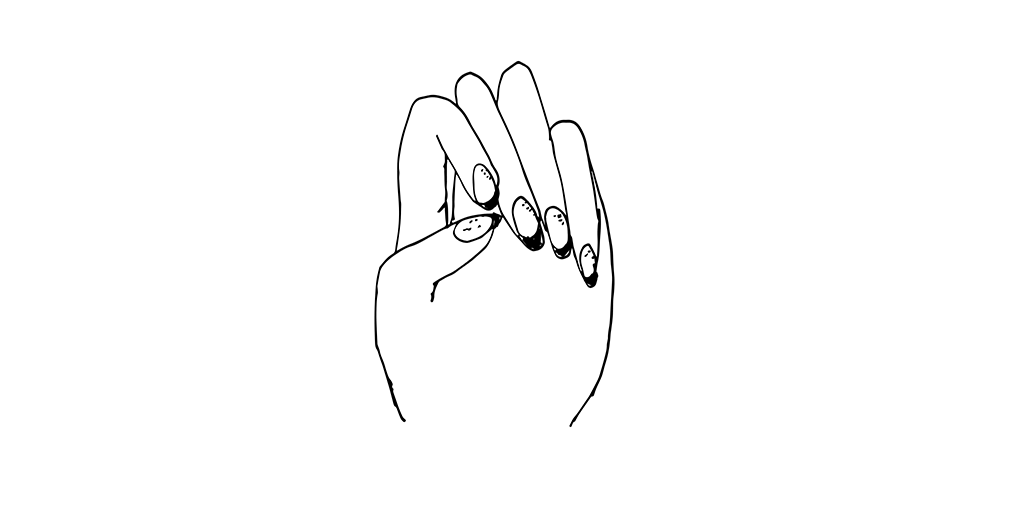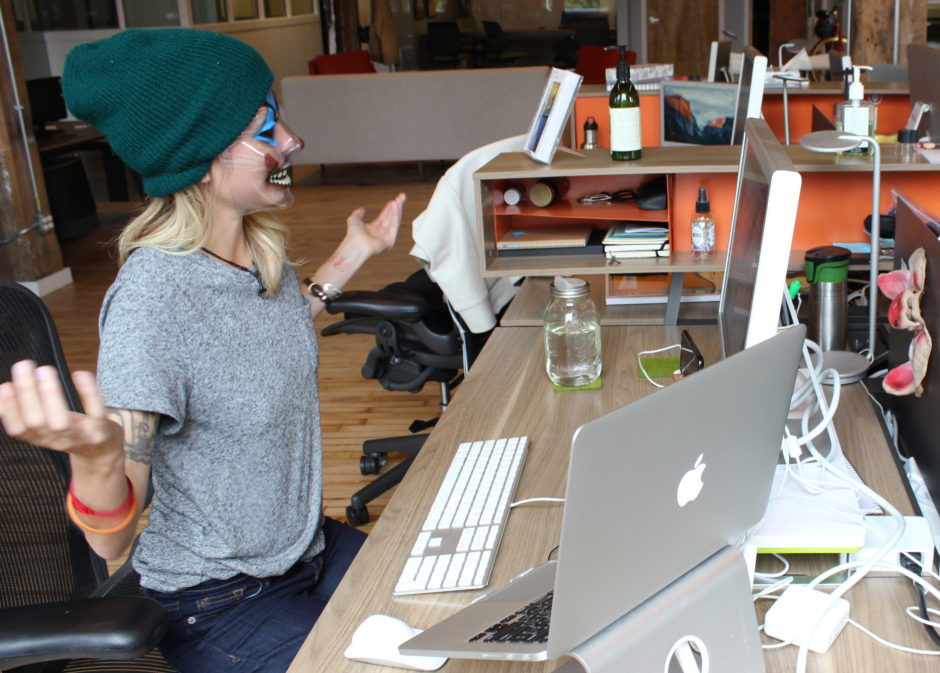
This is a follow-up to our previous post, “Best Practices for Your UX Portfolio.” As the technology industry is currently experiencing phenomenal growth, the specific field we know as user experience (UX) is looking like a promising career option for those who possess the proper portfolio. So, if you think you’d like a job in UX, pay close attention to these interviewing tips, compiled by the people who conduct the portfolio analyzing, interviewing, and hiring here at Fuzzy Math, to help you stand out among your competition.
Form an initial connection to be remembered
The simple fact that a company is not hiring doesn’t mean it isn’t open to looking. Fuzzy Math Co-founders Mark Baldino and Ben Ihnchak agree: it is totally flattering to receive emails and portfolio links from UX designers who respect us as a company, understand what we do, and express a sincere interest in wanting to become part of our team. Mark added, “Often, how we find people is they actually find us first and express a sincere interest. Making the first contact is never a bad thing, and it shows drive and interest.”

The UX job market is saturated with both new and experienced designers, so it is almost crucial that you think of a way to make sure we remember your application. Ben said, “A nice, custom intro email goes a long way towards getting an in-depth review of your portfolio, resume, and follow-up action from our side. A bland, standard form letter goes a long way in the direct opposite direction.” To this point, one of our current visual designers went so far as to create a custom image of herself holding an “FM #1” foam finger, which she conveniently placed on her cover letter. “Obviously we took a long, hard look at her resume and portfolio,” Ben said.
Know upcoming UX trends, and your potential employer’s opinions about them
Employers want to know how articulately you are able to express current and upcoming trends in the field. Impress us with your knowledge. Many UX firms — including ours — have written about their predictions, and they would be flattered to know you’ve read their articles. Even more impressive would be your ability and willingness to agree or disagree with the stances laid out in these articles, and above that, the fluency with which you can discuss these topics. Additionally, Mark said, “Be ready to ask questions to the team — very very specific questions, perhaps regarding process, work style, clients, etc. — to show you’ve done your homework.” More or less, you need to position yourself to stand out among your competition.
Show us what you’ve got
As stated in our portfolio blog post, if your work speaks for itself, we’re intrigued. It also never hurts to bring artifacts to a UX interview. Show us tangible examples of your process, whether that means you’re showing us your wireframe sketches or you’re drawing out a brand strategy for a mock client. We want to know how your process will blend with — or contribute to — our team.
Tell us about your design process
Any employer will want to know about the work you’ve done. Instead of focusing on the name brand clients you’ve designed for, or pulling up final products you played a part in designing, talk about the entire process.
Fuzzy Math UX Designer Nick Leonard, who participates in the hiring process by interviewing and evaluating applicants, as well as reviewing portfolios, said, “Potential employers want to hear about how the project came to be, who the stakeholders were and what their goals were, if there were any constraints — and if so, what? — and who you were working alongside. Share what you actually did to accomplish the project goals, making sure to explain how decisions were made.”
Specify what it is you’d like to do, and explain why
As mentioned in the previous post, explain whether you want to be a generalist and do it all, or if you would prefer to focus on one or two subsets of UX. Why is that?
“Don’t exclude yourself from a job by being too opinionated about a part of the process.”
Mark Baldino
UX design agencies might be looking for someone who has a particular skill set to fill a void within their team, or they might be swamped with client work and therefore are in need of a UX designer who knows how to generally do it all. “During our interviews we ask people what they like or dislike about the design process. Be honest but careful — don’t exclude yourself from a job by being too opinionated about a part of the process,” Mark said. With this in mind, remember that you are interviewing for the job you want to do, so be honest rather than misleading about your interests, relevant skills, and experiences.
Share your contributions
We do a majority of our work in teams, so we assume you have too. After all, the UX process requires expertise from multiple perspectives for the best possible product design. So when explaining your portfolio, Fuzzy Math UX Designer Carl Duffield, who has firsthand experience interviewing and reviewing potential interns’ portfolios, says to elucidate on the following typical UX interview questions: Was it a solo or group project? What role did you play on the project (especially if what you’re showing us was a group project)? In essence, while you might try to impress us by explaining how the group collaborated and contributed to a stellar end result, say what you did specifically. Even if it was a team effort that drove the project across the finish line, it’s ok to lean on what you’re proficient at.
“We might ask questions. Have answers. Sometimes the ability to think on the fly is extremely important — even if the answer isn’t perfect.”
Mark Baldino
With this, you should also be able to recount any setbacks you have encountered. As stated in our previous post, it’s totally okay to make mistakes! UX is about taking a problem or a roadblock and figuring out the most convenient, direct, and user-friendly route to get around it. Mark said it best: “We are looking for problem-solving ability. What was the problem? How did you get there? We might be curious to know more about how you surmounted the issue, so naturally, we might ask questions. Have answers. Sometimes the ability to think on the fly is extremely important — even if the answer isn’t perfect.”
“Don’t try to make projects that really didn’t involve UX design seem like they did.”
Nick Leonard
Be honest, be clear, and be yourself
We know this sounds totally cliche, but these really are good rules to follow when interviewing for any UX job. If your experience is primarily from school projects, we expect that you’ll mostly have worked in groups. “That’s totally cool, we work in groups too!” Nick said. “Be transparent about your group composition and your particular contributions. Do not be sneaky about this and make a group project sound like a solo project… it just looks bad. And don’t complain about your group members in your portfolio or during the interview — yes, we’ve seen this,” he added.
Furthermore, “Don’t try to make projects that really didn’t involve UX design seem like they did. So many people are trying to move into the UX space, and seeing projects like this is a red flag that you may not have the requisite knowledge in the subject,” Nick added.

Finally, you want to feel a connection with our team just as much as we want to feel a connection with you. Say you come in with a phony exterior. We’ll either see right through it, or worse, we’ll fall for it. If the latter, then you’re stuck having to pretend to be someone you’re not because that’s the person we clicked with during the interview process. We’re people, too, and we enjoy having a dynamic plethora of personalities in our office. As much as we appreciate the technology behind robots, we are not robots ourselves. Stay true to who you are as a person, and in time, you will find the team that fits you.
Interview the company while they interview you
As mentioned a couple places above, remember that you are searching for the right job for yourself. During the interview process, keep the following questions in mind: Do these people seem like people I want to work with eight hours a day? How is this company going to be different 12 months from now? How will the role I’m interviewing for need to adapt during change? Ben advises, “Always keep in mind not just getting the job, but also, make sure this is the job you want to get.”
Haven’t yet read our post elaborating on what we feel are the 7 Best Practices for Your UX Portfolio? Check it out, and if you follow all this advice, you should be well on your way to landing a position as a UX designer. Good luck!